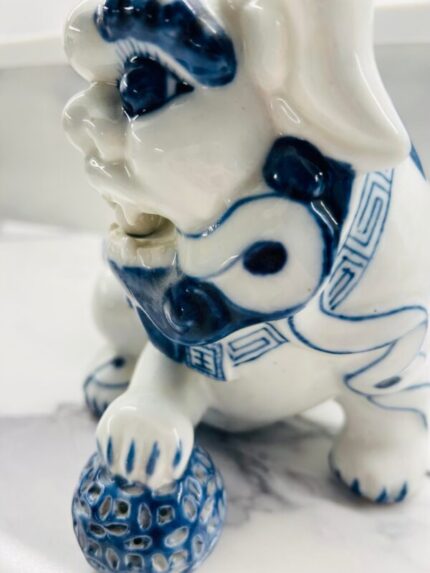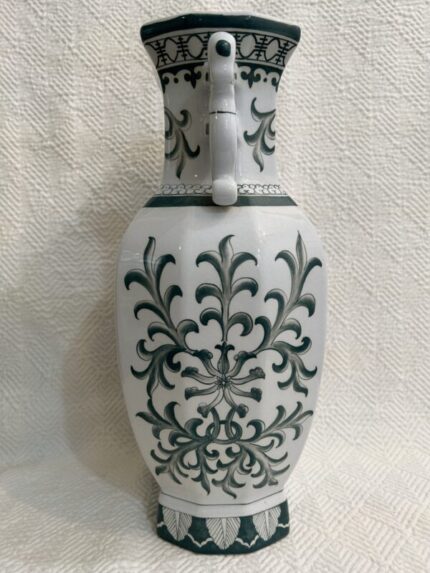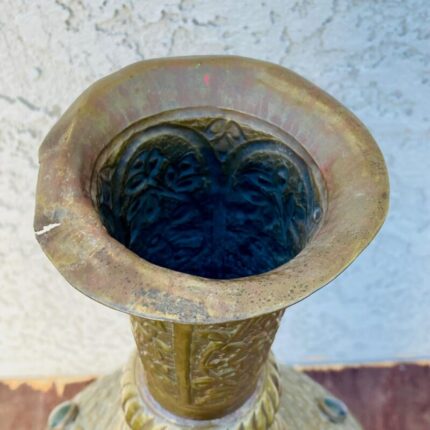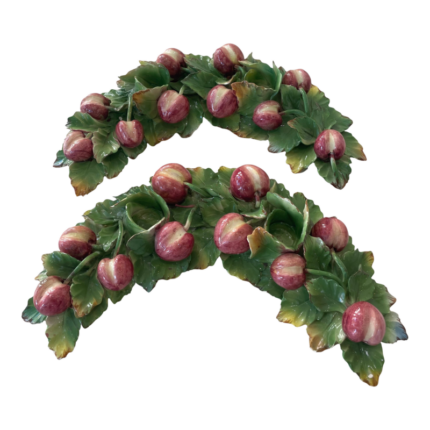Large ceramic glossy warm white vase with a decor in brown and grayish glaze
In excellent condition, no cracks or chips with beautiful aged patina
The scope and range of West German pottery lends itself very easily to collecting. Each decade brings forth a different style and design of pottery: from the sleek lines and muted tones of the 1950s through the orange and red gaudiness of the 1960s, to the crusty, thick Fat Lava glazes of the 1970s and every possible permutation in between. Size, form, colour, glaze, factory, designer, decade… all offer a cornucopia of collectable pieces, just waiting to be sought after and cherished
The main reason that so much choice is offered is due to the nature of the ceramics and their production by a vast number of factories and makers. These pieces were mass-produced for distribution both within mainland Europe and for export across the World. Marketed as cheap decorative items for the home, many were broken, lost or thrown away as time went on and fashions changed. Now, a new era of appreciation is starting to recognise the thrilling, and in some cases pioneering, design that went into making these pieces.
The work of the main producers in the style concentrated on single decorative items such as vases, jugs and bowls, rather than sets of tableware. There were a relatively large numbers of basic shapes in the plain clay body, and these were heavily decorated, typically with a great variety of glaze effects in more than one colour, many using thick contoured glazes. The bodies sometimes carried moulded patterning or incised decoration (as in the ‘Vetter’ bowl) but glaze colours usually had the impression of being placed by flowing or brushing, rather than more precise painting. Figurative decoration is not very common, and typically plant-based when it occurs.
After the defeat of Nazi Germany, it took a few years to rebuild the German pottery industry. During its heyday from the 1950s until the 1970s, over 100 pottery and porcelain companies and studio potters were actively producing art pottery in West Germany. Scheurich, Carstens, Bay, ES, and Dümler & Breiden were the most prolific producers, and while production began slowing in the early 1970s, a wide variety of art pottery was produced well in the 1980s.
West German Art Pottery is well known for its great variety of forms and expressive colors. The pottery began getting attention in the mid 1990s,
In 2006 Graham Cooley organised the exhibition “Fat Lava: West German Ceramics of the 60s & 70s” at the King’s Lynn Arts Centre[1] from his vast collection. This exhibition popularized the phrase “fat lava” but was not the origin as some believe. The term was in use by eBay sellers years before and may have originated as a mistranslation by computer programs.
- Dimensions
- 5.51ʺW × 5.51ʺD × 16.54ʺH
- Styles
- Mid-Century Modern
- Period
- 1960s
- Country of Origin
- Germany
- Item Type
- Vintage, Antique or Pre-owned
- Materials
- Ceramic
- Enamel
- Condition
- Good Condition, Unknown, Some Imperfections
- Color
- Gray
- Condition Notes
Patina Consistent with Age and Use
Patina Consistent with Age and Use less











































Reviews
There are no reviews yet.